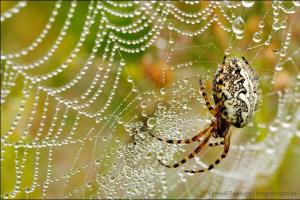Are you thinking about what color to choose for the facades of your kitchen unit? Just don't settle for boring options! Bright drawer doors are back on trend, so take a look at these colorful solutions and choose the one that suits you best.
1. Chic purple is the color of the year!
Although purple shades have been considered fashionable for several years now, designers assure that these colors will remain relevant in the coming years. So you can safely order purple furniture. It will look simply stunning and add luxury and richness to the room. But in large quantities, purple can be irritating. If you want to get a calmer interior, then order a kitchen in light purple shades. And support the color with several decorative elements: a tablecloth, a lamp, a work apron, etc.





2. Complex gray color
A sharp transition from a fashionable and bright color to a neutral and no less popular shade - gray. Although many consider gray boring and dull, it deservedly enjoys the love of designers. Warm and deep shades of gray add sophistication and style to any interior. Just make a choice in favor of facades on which the texture of the material or interesting milling patterns are visible.





3. Mood-boosting blue
Blue color– an eternal favorite for kitchen fronts. You can choose a lighter or darker shade, depending on the size of the kitchen and interior style. For example, blue and light blue kitchen cabinets fit perfectly into the interior nautical style. The most suitable companion color for it is white.




4. Fun orange color
If before this your kitchen was dark and boring, then it’s time to order orange kitchen. It is very easy to introduce orange color into the interior; even one cabinet, a work apron or several large decorative elements are enough for this. Like purple, it's very good in limited quantities. This is the case when more does not mean better. It is best to balance its explosive nature with grey, white or light blue.




5. Complete tranquility of white
Don't give up on this option just yet, as a simple but eye-catching color can be a great backdrop for any accent color you choose. Plus, white matches any shade of your old work splashback, floors, and walls, so you can minimize renovation costs.





6. Bold and minimalist black
When did you read about best shades For kitchen facades, then they hardly remembered the color black. However, it is an excellent choice for kitchens in modern style with glossy surfaces and clear lines. And the kitchen design in black and white is a classic, proven over the centuries. The bravest ones can order a red and black kitchen.






7. Refreshing green
Just like blue, green has many shades. In chic modern kitchens Lime and olive colors look great. Pastel light green will give your cabinets a vintage look. Yes, a retro-style interior would not be complete without green shades.





8. Charming yellow
Natural natural shades always easily fit into the interior, only, say, green carries spring freshness, and yellow fills the house with the kisses of the Sun. Yellow kitchen cabinets look even better paired with white stone or wooden countertops. Combinations of yellow with black, green, and red also turn out elegant.




9.Everything is red!
And finally, the color red completes the list. It fits perfectly both classic and retro styles, and stylish modern. Only in a red kitchen there should be complete order; it does not tolerate clutter. To balance out the brightness of red a little, add white or black to it.





Well, now you know which 9 shades are best suited for kitchen facades. We hope that the agony of choice will not last too long, and soon you will be admiring your brand new and stylish kitchen.
Color plays one of the most important roles in kitchen design, which one to choose. To avoid getting into trouble in terms of defining different color combinations, you first need to know some of the features of color in the interior.
Kitchen color and human psychotype
The most soothing can be called all warm and light colors, which have a great effect on both the level of appetite and the energy and psychological level of a person. Such colors are light beige, white, cream, light green, etc.
If we talk about the element of fire, then there is a lot of it in the kitchen interior, thanks to the almost constantly switched on stove. If there is sufficient natural light in the kitchen, shades of red, orange and pink should be ignored, as they belong to the element of fire. This rule also applies to the element of water, because the sink is responsible for it.
For this reason, it is not recommended to use bright, cold colors. It is also worth considering that each zone is responsible for its own specific color and the elements, so you should not use the opposite shade to decorate the kitchen.
Read our article on what Feng Shui kitchen color you should choose
Best shades
Tile
The kitchen is at the same time working space, and living space, so you should adhere to visual moderation. There needs to be a balance here. This must be taken into account before laying the tiles, and it is also important to try to determine the location of the apron. 
Below are the basic principles for harmonizing tiles in the kitchen:
- tiles made in glossy black and white will give the room a strict look, as well as additional style and chic, mainly this;
- black colors go well with gold and silver;
- furniture in white colors harmonizes perfectly with mosaic tiles;
- black tiles will highlight red kitchen furniture;
- tiles of rich colors will give the kitchen some airiness and increase volume;
- tiles made in gray color, will make the kitchen colder and simpler, and will also perfectly highlight kitchen appliances;
- tiles and furniture of the same color will give the interior more classicism;
- A countertop designed to look like stone will be emphasized by convex tiles or those that have a rough texture.
Ceiling
The color of the ceiling is perhaps the main parameter influencing the appearance kitchen interior. Choosing the right shade is quite difficult. Here it is always necessary to take into account the lighting of the kitchen and its size, as well as the color of the furniture itself.
Tips from designers regarding choosing a color for the ceiling:
Kitchens with a small area are absolutely not suitable for use when decorating the ceiling in dark and dull shades. The latter visually make the room even smaller.
Multi-level ceiling in large kitchen need to be decorated in different colors. As a result, a whole work of art will appear on it. 
To properly design glossy or matte suspended ceiling in a small kitchen, it is recommended to use the lightest shades: a saturated color will empty the ceiling, and this absolutely should not be allowed.
A stretch ceiling with a bright and clear pattern is best installed in a large kitchen.
In the center multi-level ceiling should not be too dark in color. This principle is suitable for a room that has any area.
The ceiling should have a color that matches the style of the interior and matches the shades of the kitchen furniture and accessories.
It is better to choose a light color for a plastic panel or aluminum strip for the ceiling. Dark shades should be avoided, as in this case they do not look so presentable.
It is necessary to try to ensure that the one shown in the picture fits general design interior
Kitchen ceiling small size It will look best in the following colors: white, beige, creamy, milky, gray, golden, turquoise, lilac and other light shades.
In no case should a ceiling made of plasterboard be decorated in too dark and gloomy colors.
Watch the video on how to choose a high-quality stretch ceiling:
Floor
There is no doubt that neutral color is best for kitchen flooring. Among them, shades that imitate wood and stone surfaces stand out. This flooring goes well with all the furniture and goes well with all the shades of the walls. It can be made either dark or light, however, this color has long become a classic.
It is important to always remember that a dark floor can visually make the kitchen appear much smaller. True, if there is a light wall and furniture in a large kitchen, a dark floor will make it more elegant. It can really bring real chic and lightness to a room.
It is important to remember that if there is a white cat in the room, all its fur will be clearly visible on such a floor. You can also see all sorts of crumbs and dried traces of water on it with the naked eye. This flooring is only suitable for you if you are used to constantly cleaning, otherwise such work can quickly become boring and the floor will have to be repainted.
If you choose a light-colored floor, for example, white, gray or milky, you can visually increase the space of the kitchen.
White color goes well with all contrasting shades. White flooring can be seen almost everywhere and is good in any interior design. True, let's think about cats again. If there is a dark-colored pet in the room, all its fur on the light-colored floor will be visible to the naked eye.
Textured floor white with a shade of gray and beige will perfectly hide dried water stains, as well as small light-colored debris.
You can also combine the color of the floor. Let's say a light color in work area kitchen and dark - near the dining table. It is always worth remembering that there are different materials for the floor, which means they can also be used in an original way in kitchen design.
Furniture
The size of the kitchen space largely determines the choice of colors. Here are some rules to follow:
- Dark shades and a combination of bright contrasting colors are always suitable for a large kitchen space. The kitchen furniture looks interesting.
- For a small kitchen, you should choose furniture in a light pastel shade.
- To save the kitchen from fading, you need to use rich colors in small things: curtains, chair upholstery, napkins and tablecloths, as well as in the walls, which need to be painted in a brighter tone than the furniture.
- If you have the same color of furniture and walls, the first should have a darker or lighter shade, unlike tiles or wallpaper.
- Most designers choose a method where the furniture is more light tone than the walls, but darker than the floor.
You also need to accept the fact that color can visually make a space appear smaller or larger. A small kitchen needs furniture made in white, peach, beige, yellow, blue or light green. It will also have a more spacious look with a glossy façade.
A large kitchen looks great with furniture made in bright, warm colors, with the exception of. If there is sufficient free space in it, it is recommended to use furniture in dark brown, black, dark green, red, purple or orange color. They all fill empty spaces perfectly.
In the process of selecting furniture for the kitchen, you must also take into account the cardinal directions. The amount of natural illumination depends on where the walls are facing. If the kitchen is located in the south side, it will be often illuminated sun rays, for this reason it needs to be made cooler by choosing furniture in cool colors: purple, blue, light blue. The kitchen, which is located on the north side, needs furniture made in warm colors: red, yellow, green. 
Walls
Dark color, as already mentioned, makes any space much smaller, for this reason it fits only into a large and spacious kitchen.
You cannot use cold shades in it, because then such an interior will be monotonous, uninteresting and faceless.
If the kitchen lacks a natural source, then it is necessary to use the warmest and preferably pastel colors for the walls.
If the kitchen is constantly illuminated by sunlight, it is recommended to avoid flashy shades for the walls, because then they will turn into even more saturated ones and even change their tone.
Today, green is at the peak of its popularity. Many explain this by the fact that it has a wonderful effect on the body’s digestive system. Pistachio or calm salad shades, for example, will look good in the kitchen.
Pastel colors, yellow gloss and red copper are also popular.
White color is very popular and has many faces. very popular. 
The shade of the furniture and its design also play an important role in the kitchen. For example, brown furniture goes with a wall in warm peach and beige tones.
In practice, most people almost always determine the shade of the wall so that it harmonizes with the furniture, and not the furniture with the wall. If the latter needs to be highlighted somehow, the wall should have a dim appearance and be without large patterns. If there are as many as possible unusual furniture, you need the walls to be neutral in color, without bright patterns.
If the kitchen furniture is decorated in light and calm shades, despite the fact that the kitchen itself is quite large, the walls should be as catchy as possible.
It is worth considering the design of the furniture itself. If she was chosen with romantic and rustic style, then the wall should be light.
Sunny kitchen
When choosing a color for a kitchen, perhaps the most important criterion is the degree of natural light, since in bright light each color is perceived completely differently.
What can we say, rich dark shades will fit perfectly into the interior of a brightly lit kitchen.
- Rich deep shade. In no case should you worry that a dark-colored wall will take away the free space of the kitchen, because it is constantly illuminated.
- Muted shade. It is better to prefer a calm palette, because then the kitchen will not be too bright under direct lighting.
- Cool shade. It will give some coolness. For example, the green-blue color of the walls or furniture in a south-facing kitchen will bring in the freshness of the sea breeze. The color of the walls and furniture in yellow-orange tones will only enhance the feeling of heat.
North side (which one to choose/choose color)
If the kitchen faces north, then it is not necessary to make it exactly white. This applies to both walls, ceilings and tiles, as well as furniture.
- When there is too much white in the interior, it becomes not entirely comfortable. And in this case, there is a solution: you just need to choose one light pastel shade: cream, sand, light green or light blue (it should be very light).
- For the kitchen floor, you need to choose a tone that imitates wood, or the most light laminate, carpet, you can use a light carpet. Very original solution: Paint the floor white. Light-colored floors, walls and ceilings, and similar colors, look great.
- Everything that concerns giving the kitchen interior additional light with the help of furniture and textile contrasts does not work here. First of all, furniture and fabric of dark shades, since they absorb 50% of the light rays. If there is a pattern on the kitchen furniture, then this is tolerable. What you need to remember is the light color and how it matches the trim.
If we discard the walls, floor and ceiling in the kitchen, then there is an object content. However, it is worth knowing that it can not only be entirely white or light pastel color.
- to increase the illumination in the room, you need to add bright accents. The main feature of this trick is the selection of “pure”, basic colors;
- Let's say, if you choose a red color, then it should be red, and not crimson, fuchsia or;
- if they decide on yellow, then only with warm canary, not lemon, etc.;
- You should avoid “acid” shades;
- a kitchen decorated only in pastel light colors has a slightly darker look than the same one, but with bright accents.
Check out expert advice on how to choose a kitchen color:
A certain color can not only decorate a kitchen, but also completely transform it, make it large, bright and memorable. The main thing is to remember all the above features of color combinations.
The combination of colors in the kitchen interior, without any exaggeration, is the most important thing! You can spend a lot of money on decoration, buy expensive furniture and accessories, and in the end, get something colorful and completely unattractive.
In this article we will tell you and show you simple examples how to choose colors.
You won’t find any abstruse terms like “monochrome”, “achrome” here. No theory or unclear reasoning!
Let professional designers use this, and we will go the other way: we will start from the color of the main piece of furniture, and then try it on various options contrasts. And along the way, discuss what is good and what is bad.
We are sure that among the variety of examples offered, you will certainly find something suitable!
Basic rules for combining colors in the interior
The basic rules for combining colors in the interior are as simple as two and two: do not try to embrace everything at once and Do not use all the colors you like at the same time!
It sounds simple, right?
But when it comes down to it, this is what begins: “Or maybe I should buy an apron for this red tabletop, in a lilac-coral tone? Or, in orange-red? Or, in terracotta brown? No? Too much? Then maybe we should buy purple chairs and curtains?”
As a result, it turns out what we said initially: an overload of bright elements that form a chaotic mess in which not a single object “plays”.

And no matter how difficult it may be, you need to highlight ONE thing, What would you like to pay attention to first of all?
We will tell you exactly how to do this below. Now let’s reassure those who want everything at once.
For such cases, there is a wonderful “Boho” style, which we will also talk about later, in the corresponding subsection. This is where excesses are welcomed and you don’t have to worry about overdoing it.
Rule 60/30/10
And here is another rule, more specific and most useful. Perhaps, besides this, an amateur should not worry about anything else, since it works 100% effectively.
Law 60/30/10 means that the interior should have no more than 3 color schemes, and their distribution is as follows:
60% - dominant color
30% - additional color
10% - accent
Attention here!
The dominant color is not the one that is your favorite and that you want to apply everywhere.
The dominant color is the background color against which other colors will be clearly visible: the additional and most important one on which you want to focus.
For example, if you really like the color red, then to ensure that it is noticeable, but at the same time unobtrusive, you only need 10%. And nothing more.
Very good the meaning of this law is shown in the photo below. Unfortunately, this is not the case, but the main thing here is to show you the rule with a live example:

As you can see, following this rule, we we get an interesting effect.
The room is essentially beige and brown, but we see it as yellow!
And, if you overload the accent, the look will look something like this:

Looking at this photo I remember: “Horses and people mixed together…” ©.
And for some reason we are sure that owner of the interior I wanted to emphasize the red color, but I just went too far.
And in the end, against the background of this bright red spot, neither kitchen furniture, nor a stylish hood, nor beautiful tiles on the apron.
Of course, there will be designers who will immediately say: this is not bad taste, it’s just a monochrome interior (that is, in which there is one color and all its shades).

But, you yourself understand that this is just a beautiful theory and words. But in reality, we just see a red spot that hurts our eyes.
So, you have to think carefully and decide what is really important to you.
And one more thing: the three-color rule does not mean that you need to choose only three colors.
It means that 3 color schemes are allowed.
That is, if you have a light beige wall as a background, then the floor can be made dark beige and the carpet almost white. But, all these shades need to be included in 60% of the original percentages.
The same goes for the second color and accent color. But, here too, without fanaticism. A spread of two or three tones will look organic, but a big contrast will look like two different color schemes.





Naturally, the room cannot do without a fourth or fifth color. No other way. But their share should be very small.
We identify the most important subject on which we would like to focus
So where do we start? Of course, by choosing a detail or object that you consider the most important and beautiful of the entire environment.
It could be:
- Wall decoration
- Finishing the work apron
- Kitchen furniture
- Stylish accessories
- Latest household appliances
No matter how much you would like it, but you need to choose one thing that you want to focus on. And it is this element that should include the main color that you focus on (in a ratio of 10% of the rest).
Let's say you have an incredibly beautiful work apron on the wall, red.

Then, you focus on it, and add a little more red in the form of splashes to the rest of the details: a small inclusion of red in the chandelier, paintings, decor.

Very small, please note! So that in total you get only 10% red.
But, let's look at each point in more detail.
We start from wall decoration
If you dream of an unusual and eye-catching wall decoration, then you will have to say goodbye to the thought of too bright furniture, flashy accessories and unusual floor coverings. Walls that are decorated pretentiously are very obliging.

And so that you can take a good look at them, you will have to give up other things and choose them as neutral in appearance and color as possible.
If you're willing to give it all up for colored walls, then go for it!
If you want to emphasize the deliberate asceticism of the walls(for example, just white, without decorations or other embellishments), then you need to select contrasting accessories, against which white wall It will look very appropriate and elegant.

This refers to paintings, chandeliers, shelves, etc.
White walls
The combination of white in the kitchen interior is possible with almost any color in the spectrum.

But, if white is taken as the background, then the best second color is the light color, natural wood. And already accented - whatever you like.
It’s simply impossible to come up with something better!

With this classic combination, almost any accent will be appropriate, except dark brown and black.
But if you make black the second color, and wood the accent, you get a very elegant look!

In a word, the combination: white wall + unpainted wood is a classic that is good in any interpretation.
Colored walls (photo wallpapers, ornaments, etc.)
If you have flashy walls, then the furniture should be as simple and unobtrusive as possible. Otherwise, these walls will simply mix with the cabinets and there can be no talk of any elegance.
The combination of colors in this case should be something like this: a colored wall and plain furniture, moreover, in a contrasting color, and not in the same color scheme.
The best option for the second tone in this case:
- White
- Grey
- Brown
- Black
If you find it difficult to choose a good contrast for the second tone, then you can use the color selection spectrum.
Moreover, it is better to do this online, on a special service: https://colorscheme.ru
There you can choose both contrasts and mono-color colors.



If you figure out how to use this site, then you will never again be faced with the question of how to correctly combine colors in your kitchen interior.
Stone walls
A stone wall is a very bright decorative element that doesn’t go well with anything other than white and light beige.

Any other color will simply “kill” the natural color of the stone, and it will not look expensive.
But if the stone itself is white, then it’s easier in terms of selecting a second color. But here you still need to take into account that not every furniture material or other decoration is compatible with stone.

There can no longer be any plastic, MDF, or metal here. Only natural materials and the most simple design.
Walls with stucco or plaster designs
If there is modeling on the wall, then it is best for the main background to be white. The stucco design can be absolutely any and it is better if its color is an accent color, that is, it makes up only 10%, which we talked about above.
From a work apron
A bright work apron is such a detail on which a lot depends.

If you make colorful walls, then its beauty will fade. The same applies if the kitchen furniture is matched to the tone of the apron.
For example, now quite popular combinations are: a colored apron made of tempered glass and a bright kitchen to match.
This is ugly, to put it mildly. And too intrusive. This is what it looks like:

If you have a colored kitchen, then no colorful aprons! This is the law.
If the apron is colored, then no bright kitchens. It is important.
Here's what a colored apron looks like in combination with neutral furniture:

There is a difference, right?
Now, look at what the aprons look like in terms of color schemes. We have selected the most successful combinations and interiors with the right color.
Aprons in red tones
Red color does not tolerate the presence of many shades of its spectrum nearby. That is, pink, coral, burgundy, etc.

Only the right contrast or black, brown, gray and white colors go with red. The latter is a win-win choice.
Also, mirrors go wonderfully with a red glossy finish.

Aprons in blue and light blue tones
Blue really “loves” the white background color and natural, unpainted wood as an additional, second tone according to the three-color formula.

But blue, without any additives, is not the best option.
Blue is best used as a complementary color as it is too light for an accent color.
And so, it looks great paired with: light green, lilac, white and black.

Aprons in green tones
Green color goes well with yellow. If we are talking about shades of green, such as pistachio, olive and others, then yellow should be in their color scheme.

That is, sand and mustard would go well with olive, not pure yellow. Well, it also goes with white, just perfect.
Aprons in orange and yellow tones
Orange is “friends” with light green. Very good and fresh combination. It also goes well with orange. Brown color. You definitely shouldn’t combine orange with yellow, blue, violet, or lilac.

Aprons made from natural materials
Here we can say the same as about finishing the walls with stone. If you have a marble backsplash, then select furniture or flooring that matches the color of its veins.

If it is made of granite, then you can make the same window sills in color. In general, duplicate the material somewhere again, not exceeding 10%.
Aprons with ornaments
If you have an apron with some kind of pattern, for example, oriental, then it would be good to duplicate it either in curtains, or in tiles on the floor or in a chandelier. You shouldn’t “push” it everywhere, otherwise the result will be excessive diversity.

Furniture and walls should all be neutral colors and textures.
Based on the color of the tabletop
From the color of the kitchen furniture
The combination of colors in the kitchen interior most often depends on what kind of furniture you have.

Of course, if you are making a design from scratch and haven’t bought anything yet, then it’s easier for you.

But if you already have furniture, then you only need to “dance” from it and there are no other options, since it occupies a large space and is a second, auxiliary color.
Unpainted wooden kitchen
The best background for such a kitchen is white walls.

And as accent colors - any colors except brown and dark orange. They will almost merge with natural wood.
Kitchen in white colors
White furniture looks great against contrasting colored walls. That is, if kitchen furniture is our 30%, then the background is 60%.

There is no point in listing what color white goes with, since it goes with absolutely any color!
Kitchen in red colors
Pairs very well with gray, stainless steel and mirror surface.
Also, it creates a good contrast with black, but it should be no more than 10%, otherwise it will be very dark and gloomy.

In addition, a red kitchen goes well with blue and white. This trio resembles sea colors and looks very fresh.

Here's a great option white and red kitchen. Here, although the percentage balance of colors is not maintained, it still looks pretty nice.

Kitchen in brown tones
Brown is a very capricious color and does not tolerate almost any neighbors except white and beige.
The remaining colors must be applied very carefully, otherwise, all the beauty brown kitchen will fade against a bright background.

Also, remember this: if you have brown furniture, then the floor must certainly be light. Otherwise, the room looks dark and sometimes even sloppy.
Kitchen in blue tones
A blue kitchen should not be combined with any colored walls. The maximum is a barely noticeable gray-blue tone of the wall. Or better yet, just white.


On other backgrounds, the blue simply doesn't look as bright as we'd like.
Kitchen in green tones
This is a very bright kitchen if the color is saturated. It is better, of course, to choose either olive or pistachio furniture colors.

But, if you already have a bright one, then the accent can be blue or lilac, and the background can be light yellow or white.
Kitchen in lilac tones
Lilac furniture goes well with light green, olive and khaki shades.


Also, lilac is combined with dark burgundy, white and black. Sometimes a pink accent looks good, but if there is an additional fourth color – black.
Kitchen in yellow tones
Sunny, goes well with a light green accent, lilac, and red. And as a background, white is ideal. However, he is always perfect.

We start from accessories and textiles
If your main goal is to emphasize the presence of beautiful things, then simply paint the walls white and lay a regular wooden floor on the floor.
No more additional decorations needed! Kitchen furniture in this case should also be as natural and discreet as possible: painted or unpainted wood, white plastic.

Not many styles are rich in accessories and textiles.
These are country and ethnic options. There is no point in listing them all; we will consider only a couple of the most popular areas.
Accessories in the Provence style
Accessories in the Provence style include wood painted in blue, blue and green and forged elements painted black.
There is nothing more to add, since the accessories and colors of the curtains are varied and here your task is simply to correctly combine them with each other.

Among them, there should also be something background: for example, textiles (curtains, a tablecloth interspersed with an accent), and other decorative items should contrast with them. There should be little emphasis.
Accessories in the Boho style

But here you can roam to the fullest! Boho is the style of Czech gypsies living in Bohemia.
Everything is appropriate here: walls painted in several colors, and at the same time many incompatible accessories, different textures of furniture and decoration.
In “Boho” it is impossible to overdo it, rather, on the contrary.
If you don't clutter the room enough, it won't look stylish, and the kitchen may just look tacky. But if there is a clear excess in everything, then the look turns out stylish, oddly enough.
In conclusion, I would like to say: combining colors in the kitchen interior is not as difficult as it seemed! We hope you found our selection useful.
Perhaps there is not a single housewife in this world who does not dream of seeing her kitchen not only functionally convenient, but also as attractive and cute as she herself. The kitchen is the pride and place of reign of every woman, but what to do if the entire kitchen kingdom fits into a “handkerchief” of up to 8 sq.m.? Exactly! Plan the correct and convenient arrangement of furniture and think in advance about what kitchen color to choose for a small kitchen.
Color will help expand the kitchen without remodeling
If remodeling the walls in a small kitchen is not the main task overhaul(combination with the living room, use of the balcony area, etc.), then it is worth considering design options with a play of the colors of the walls and furniture, resorting to a small visual illusion, in which you can get visual increase kitchen kingdom.
Any woman knows that light colors visually expand the space (figure), blurring the boundaries, while dark colors, on the contrary, make even large objects less noticeable. But a black square in the middle of a white field tenaciously attracts the eye (remember Malevich!) and does not give rest to the eye, so from dark colors in the design for a small space limited by kitchen walls, it is more logical to use “darkened” - pastel.

As a bonus, at the final stage of our design project, we can easily afford to add a couple of bright, rich stains and strokes to the interior to contrastly emphasize the bright cleanliness of the updated kitchen.
White-white-white color...
The ideal color of purity is white. But the kitchen, where the walls and interior items are boiling white, resembles a surgical ward rather than a cozy kitchenette, and this design looks downright boring. Moreover, keeping such a kitchen in in perfect order quite difficult for the housewife.

If this color of the walls and furniture is fundamentally important, then try “dilute” it with variations of pearl, cream, silver, ivory or beige. These colors can be chosen not only as wall coverings, but also for facade panels kitchen set, dishes and curtains, furniture colors.

Spring in the kitchen on a white base
If you decide on a color combination of white and another color, then here you can get creative: white is the ideal neighbor for anyone! Bright, rich, local colors are an excellent choice, but we have already agreed to focus on bedding.

The first in line will, of course, be pearl gray - in combination with white - the color of true nobility and discreet design of walls and furniture. True, this design will not give the kitchen the desired freshness; it is better to turn to spring blues, yellows and green flowers. The freshest, most juicy shade of spring green will, of course, be light green.

Advice! A design made in white in combination with light green in a kitchen interior will enliven, refresh and expand a small room, giving it a “spring fragrance”.
White and light green. Which one is bigger?
The right of dominance can be assigned to any of these selected colors; using them as the main covering of walls or the main color for furniture will not spoil the impression, given that all shades of green give rest to the eyes and reduce psychological stress, and white sets you in a peaceful mood and stimulates the appetite , which is important for the kitchen.

Flower placement options
It is not at all necessary to paint the walls with a white and lime mattress! You can bring one color or another into the interior using glossy surfaces of walls and facades, reflective mirror panels and airy curtains, and choose furniture and fittings in the kitchen in appropriate colors.
Advice! Healthy herbs growing on the windowsill in white flower pots can successfully serve as a white and lime decor.

Another solution: place these colors on the doors of the set in a checkerboard pattern and “dilute” their rows with transparent facades. You can make the upper part of the wall cabinets and shelves pure white (light green), and cover the lower cabinets with light green (white) panels.
Changing the kitchen apron
A beautiful color will help to “revive” a small kitchen. kitchen apron– a traditionally tiled area of the wall behind the sink and stove, under wall cabinets headset. You can repeat the white and light green colors when laying tiles for a new backsplash, but it is much more interesting to repeat the color of the floor on the wall.

Another design - they threw it off. This is a large slab of tempered glass onto which photo printing is applied. in a special way, and the design on the glass can be made according to your order in the colors and tones you desire.
Floors in a spring kitchen
To maintain a feeling of freshness and space, you should choose the color of sand or wild stone. Tiles or linoleum of an unobtrusive light gray color will only set off the shade of light green. A floor painted in the same light green color in a richer tone than pastel will look juicy and unusual.

Advice! When choosing a floor color, remember: dark green, bright mint or marsh brown will “eat up” all the freshness of the resulting space in a small kitchen.
Lighting in a bright kitchen
To highlight the designer spring, you should also take care proper lighting, able to highlight our design. Buy a chandelier in the form flower bouquet or replace the old lampshades with others interspersed with rich green and other bright colors that stand out favorably on the white ceiling and play with colored highlights on the gloss of the furniture.

You can completely abandon the chandelier, replacing it with spotlights that will be reflected in the glass panels, giving the white-lime kitchen festive look, and create the impression of dew drops scattered everywhere.
- Want to add color to your kitchen and make it look even bigger? Make several horizontal stripes of orange, yellow or scarlet: and the kitchen literally “opens up”.
- Do you want to “raise” your ceilings? Olive or pistachio colored stripes arranged vertically are at your service!
To keep the kitchen from being “cold”
If you are happy with the “lime on white” color of the walls and you are not a fan of avant-garde furniture, add a couple of vases with a bright pattern, designer original lamps or sconces, or a modular picture on the wall. good design solution– color screen, when part of a wall or one wall is completely contrasting or with a pattern.

Selecting furniture
Considering that kitchen set we already have it in place, we need to try to install the necessary furniture in the remaining space: dinner table, chairs, etc. So that this furniture fits into new interior harmoniously, you should not only think about their correct placement, but give them correct color. What it will be - white, light green, sand - is up to you, but in any case the color should be glossy and fit into the design of the room.
Advice! Good opportunity do not give the small spring kitchen the appearance of a cluttered room - transparent table surfaces and chairs made of transparent plastic.
Classic white kitchens (2 videos)
Using white in kitchen design (41 photos)















Kitchen color scheme - key moment while creating home interior. Properly selected shades can visually expand the space and raise the ceilings, “refresh” the room and make it more cheerful. But how to choose the right one color palette for kitchen? What do experts advise?
How to choose a kitchen color: basic rules
It is necessary to decide on the predominant shade of the kitchen taking into account personal preferences: the color should be comfortable for household members and not dislike any of them. Despite the fact that the problem of choice is almost entirely in the plane of individual views, there are a number of rules that always work. Here they are:
- Dark and warm colors make the kitchen more cozy and homey.
- Bright colors and their shades increase appetite.
- Combination of pink and gray - perfect option to reduce hunger.
- The combination of contrasting shades has an invigorating effect on the nervous system, exciting and stimulating nervous processes.
When designing the interior, you need to take into account the spatial capabilities of the kitchen. And if in large rooms color restrictions practically do not apply and open up a wide field for experimentation, then the design of a small room requires accuracy and attentiveness. First of all you need to remember:
- the best choice for a small kitchen is light warm colors;
- It is undesirable to use more than two primary colors;
- a small pattern visually enlarges the room;
- vertical lines make ceilings appear higher;
- horizontal outlines visually expand the kitchen area, but “lower” the ceilings.
It is very important to maintain a balance between color scheme kitchen interior and “climate” in the apartment. If the windows face the sunny side, it is better to give preference to cool tones - green, blue, lilac, blue. To decorate a room where the sun rarely shines, you should use warm shades - red, peach, beige, yellow, orange.
The tones in which the kitchen is designed not only help bring the design idea to life, but also create a certain psychological mood among the residents. To choose colors that really “work”, you need to listen to the advice of psychologists.
| Color | Keywords | Main Impact |
| Red | Extroversion, assertiveness, aggression. |
|
| Pink | Tenderness, vulnerability, lightness. |
|
| Orange | Movement, speed, activity, cheerfulness. |
|
| Yellow | Warmth, sun, cheerfulness, positive. |
|
| Green | Balance, naturalness, renewal, growth, energy. |
|
| Light blue/blue | Relaxation, safety, trust, loyalty. |
|
| Indigo | Truth, intelligence, help, creativity. |
|
| Violet | Wealth, power, sensitivity. |
|
| Brown | Stability, security, confidence. |
|
| Black | Mourning, night, elegance, sophistication. |
|
| White | Clarity, openness, purity. |
|
"Fearlessly" nervous system can perceive slightly softened shades. You shouldn’t decorate your kitchen in an eye-catching style: a predominant bright red or flashy orange can ruin any idea, causing rapid emotional fatigue for the apartment’s inhabitants. The same applies to plain white, black, brown or indigo: these colors are recommended to be used only as individual accents, combined with other shades.
Bright aggressive tones are best used by active people with an extroverted character type. In this case, the color will not put pressure on the psyche, but, on the contrary, will provide the necessary support to the emotional state.
Particular attention should be paid to pink: it is ideal if the owner of the kitchen often experiences a feeling of insecurity. By choosing this tone as the main one, you can create a truly cozy place, in which every member of the household will feel comfortable.
If you are in doubt about the best color for the kitchen, you should give preference to green. It is considered the most pleasant shade for the human eye and will make the atmosphere in the room fresh and peaceful.
Kitchen color: how to choose the right one
When choosing a kitchen set, you should remember the following “basic” design tips:
- One kitchen set – maximum two contrasting colors.
- The top tier of furniture should be lighter than the bottom.
- Furniture can be designed in several colors, but with only one dominant tone.
- In a small kitchen, a single-color set of discreet colors that are pleasing to the eye looks best (a combination of dark and light brown shades can be used).
- A bright set means light walls, and vice versa.
- An excessively dark set without the “participation” of delicate shades looks gloomy.
- The ideal colors for the kitchen are natural and earthy.
- Add comfort big room A few catchy accents will help.
- IN small room It is better to avoid dark saturated shades.
- The kitchen set should please its owners.
When choosing the color of furniture, first of all you need to be guided by your own taste, but you shouldn’t ignore generally accepted combinations either. The following combinations are considered classic:

When deciding what color the kitchen set will be made in, you should always try to look at the situation “from the outside.” How harmonious does the combination of shades seem? Isn't it too flashy? Will it be comfortable to stay in the room for more than half an hour?
Modern style prefers bright colors. But when in doubt, it is better to abandon catchy, saturated colors in favor of proven classic ones. Refined restraint is always relevant, and it is impossible to go wrong when choosing it. If you want to take a risk and create a fashionable accent in the room, you need to act carefully: it is better to choose white as the main tone, and bright orange as an additional tone, than vice versa.
A beautiful kitchen is a prerequisite for creating a comfortable home environment. It is enough to choose the right colors to make family dinners even more enjoyable, and to receive guests only brings pleasure to both parties.








